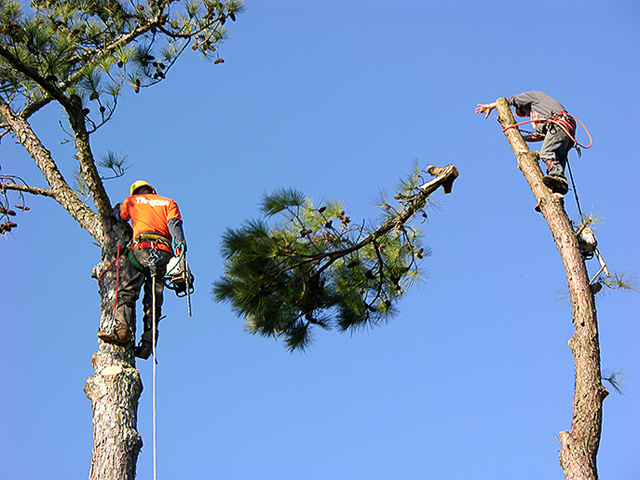Removing a tree from your property may seem a daunting task at first, but it can be broken down into simple steps that make the removal efficient, safe, and complete. In several cases, removing a tree can be done by the homeowner; in other, very easy to determine cases, professionals can be brought in in the form or arborists and local specialists in stump grinding.
- Assess tree.
- Analyze surrounding environment. Look for best or most likely fall and escape routes, obstacles, potential disasters like tree rolling downhill.
- Cut down tree.
- Remove stump.
An essential first step is to assess the tree. The size and condition of the tree can determine immediately whether the job may be better left to professional arborists. Smaller trees are easier to handle for the amateur–trees with diameters up to ten inches and heights up to 20 feet are easier to cut through and their falls are more predictable. Handsaws or chainsaws may suffice. However, some trees are best left to professional tree removers. Larger trees may require extra equipment and preparation such as ropes and cranes. Rotten or dead trees can fall unpredictably. Some tree types bend, twist, snap, and dangle dangerously as they fall such as palms.
The next step is to analyze the surrounding environment. Look for any potential obstacles in the area such as utility lines, fences, and hills. If utility lines are at risk, those service companies should be contacted. Also consider nearby property boundaries and whether or not the tree or its felling crosses them. Determine the best falling direction for the tree and establish an escape route for the cutter angled 45 degrees away from that fall.
Cut down the tree. Tree felling can take at least a day, so don’t rush things and risk endangering someone or some property. Chop an undercut into the tree on the side that the tree will fall upon. Chop a backcut two inches higher on the opposite side to relieve tension. Ideally, the tree will crease at the undercut and go down. Once it is grounded, cut off branches to facilitate removal of limbs and trunk.
Finally, the stump needs to be removed. Several methods are available though choice may depend on tree type, size, root extension, and landscape. Digging is probably the most labor intensive option but works well with small, simple root systems. Chemical rotting shortens the natural decaying time from years to months. Other methods include burning and stump grinding.





